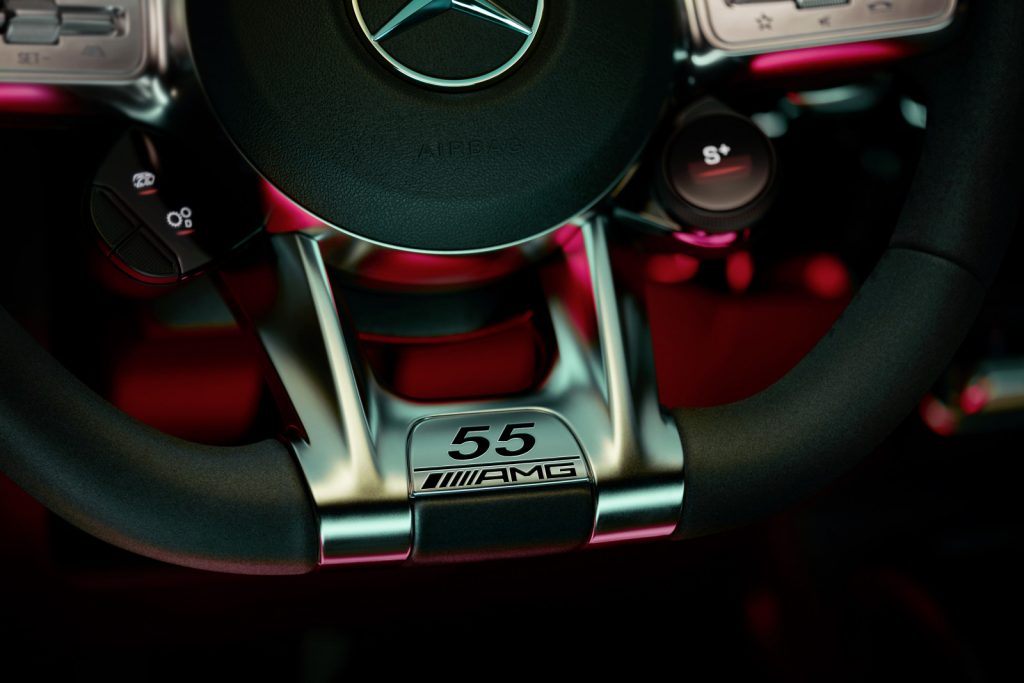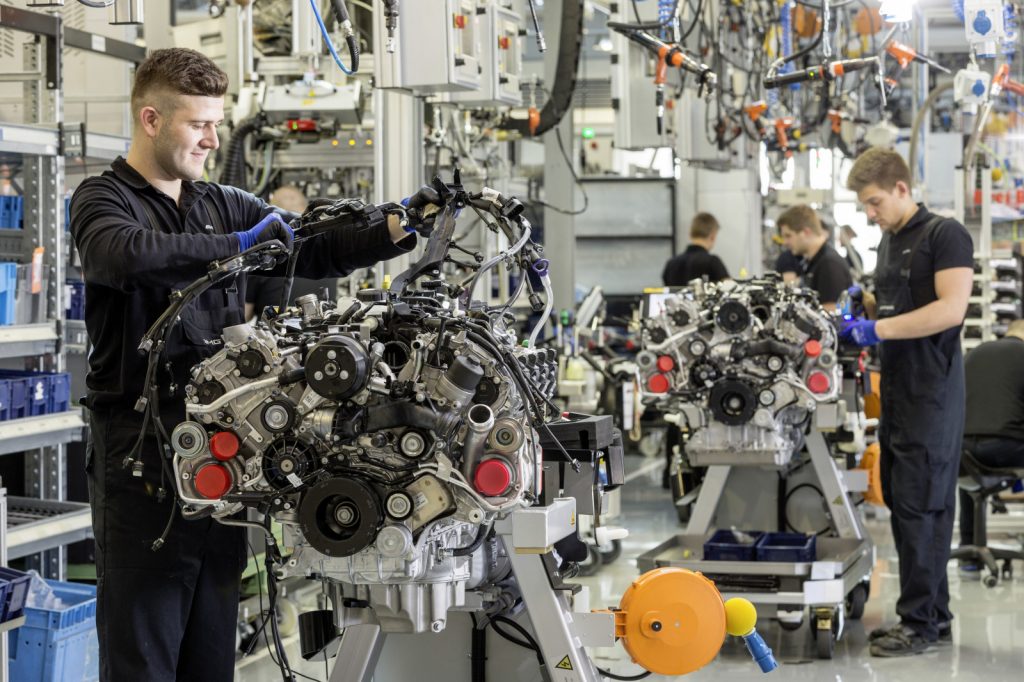An authentic
replica of the 1971
racing tourer and other
high-performance
vehicles from Mercedes’
AMG history.
AMG, Mercedes-Benz’s now fully integrated performance arm, started modifying Mercs back in 1967. Two gentlemen, Hans Werner Aufrecht and Erhard Melcher, sought to create something special from humdrum models from the Stuttgart stable.
Although this was quite an undertaking initially, the plan seemed to work in their favour as they managed to make the industry sit up and take notice. Having worked on the 300 SE race engine in the development department at Daimler-Benz until the company discontinued all motorsport activities, both Aufrecht and Melcher hankered for motorsport.
The two continued to further develop the engine in their spare time at Aufrecht’s house in Großaspach.
Two years prior, in 1965, Manfred Schiek, their colleague at Daimler, had raced in the German touring car with the 300 SE that was produced by Aufrecht and Melcher and went on to win 10 times. This cemented their reputation as experts at sustaining and optimising the performance of Mercedes-Benz cars.
Of course, this wasn’t the be-all-and-end-all for Aufrecht, as his vision was to build road cars modelled after the successful race cars.
So, in 1966, he left Mercedes-Benz and convinced Melcher to become his business partner and form AMG (Aufrecht Melcher Großaspach), acronymed after their last names and Aufrecht’s birthplace. The headquarters, meanwhile, were a former mill in the nearby municipality of Burgstall.
In no time, the engines that were built there became popular with privateer racers. In 1971, the brand achieved a milestone when it participated in the 24 Hours of Spa and the 6.8-litre AMG Mercedes 300 SEL won its class and took second position overall, much to the surprise of spectators and participants alike. After all, this was a heavy luxury car drilling lighter race cars. It caused a sensation and helped to catapult the AMG name across the globe.
 A close-up of the CLA
45 S 4Matic Coupé 55.
A close-up of the CLA
45 S 4Matic Coupé 55.
This saw the company grow from strength to strength with a great number of Mercedes-Benz models gaining more performance upgrades from the tuner. In 1976, with about a dozen employees, the company moved to new premises in Affalterbach, which has since been the home of AMG.
In 1984, AMG became an innovative engine maker, with Melcher developing a completely independent cylinder head with four valves per cylinder — cutting-edge stuff at the time.
Two years later, in 1986 to be precise, the firm decided to undertake a boisterous project and shoehorned a 5.0-litre V8 engine into an E-Class Coupé, signalling the birth of the Hammer. To this day, the model embodies everything we have come to expect and appreciate of the AMG brand as it was the poster car for many Eighties kids.
In the late 1980s, Daimler and AMG began to work together, initially as official racing partners, where the 190E race car development took place. The race car, which was commissioned by AMG with the support from Daimler, won 50 DTM (Deutsche Tourenwagen Meisterschaft) victories between 1988 and 1993.
In 1990, the cooperation with Daimler AG concluded, marking yet another milestone in the AMG story. AMG products could now be sold and maintained by Mercedes-Benz dealers. Further expansion saw the opening of a third plant and increasing the workforce to 400 employees.
Arguably the year 1993 was the beginning of AMG as we know it today, with the unveiling of the C36 AMG, the first jointly developed project between AMG and Mercedes. The rest, as they say, is history. A great number of vehicles as seen on these pages broke cover and went on to become legendary in their own right.
This year, AMG celebrates yet another milestone. Fifty-five years of AMG is more than just a number, it marks a watershed moment for Merc’s performance arm. It is also a number that resonates as it is a suffix that was pasted on a number of significant AMG models of yesteryear that went on to become legendary in their own right.
 The AMG workshop is in
Affalterbach, Germany.
The AMG workshop is in
Affalterbach, Germany.
Every AMG 55 bearing that number went on to signify a groundbreaking moment for the brand from a performance perspective. The E55 AMG V8 Kompressor really took the fight to the then E39 BMW M5 and won that performance battle. It was also one of the first production saloons to pack 700 Nm — in 2002 — mental!
Then in 2004, the C55 AMG with its 5.4-litre V8 engine finally placed the pesky E46 BMW M3 behind it in the sprinting space, signifying, yet again, that AMG was a force to be reckoned with. Meanwhile, the S55 V8 Kompressor simply had BMW scratching its head as it had no direct competitor in that class.
Since then, the brand has had some special cars; from the W204 C63 with its normally aspirated 6.2-litre V8 engine to the now erstwhile 5.5-litre twin-turbo V8 engine that was later replaced by the current 4.0-litre twin-turbo V8. Its fully in-house developed first sports car, the SLS AMG, has become something of a collector’s item. There have been some special edition models bearing the Black Series and DTM suffixes, marking the most focussed versions of the AMG lineup.
As AMG moves into an electrification era, we look back at the company’s humble beginnings to becoming a world-wide revered performance brand. We doff our hat to Hans Werner Aufrecht and Erhard Melcher, who had a dream like many of us — and who followed through. Cheers to another 55 years of AMG.